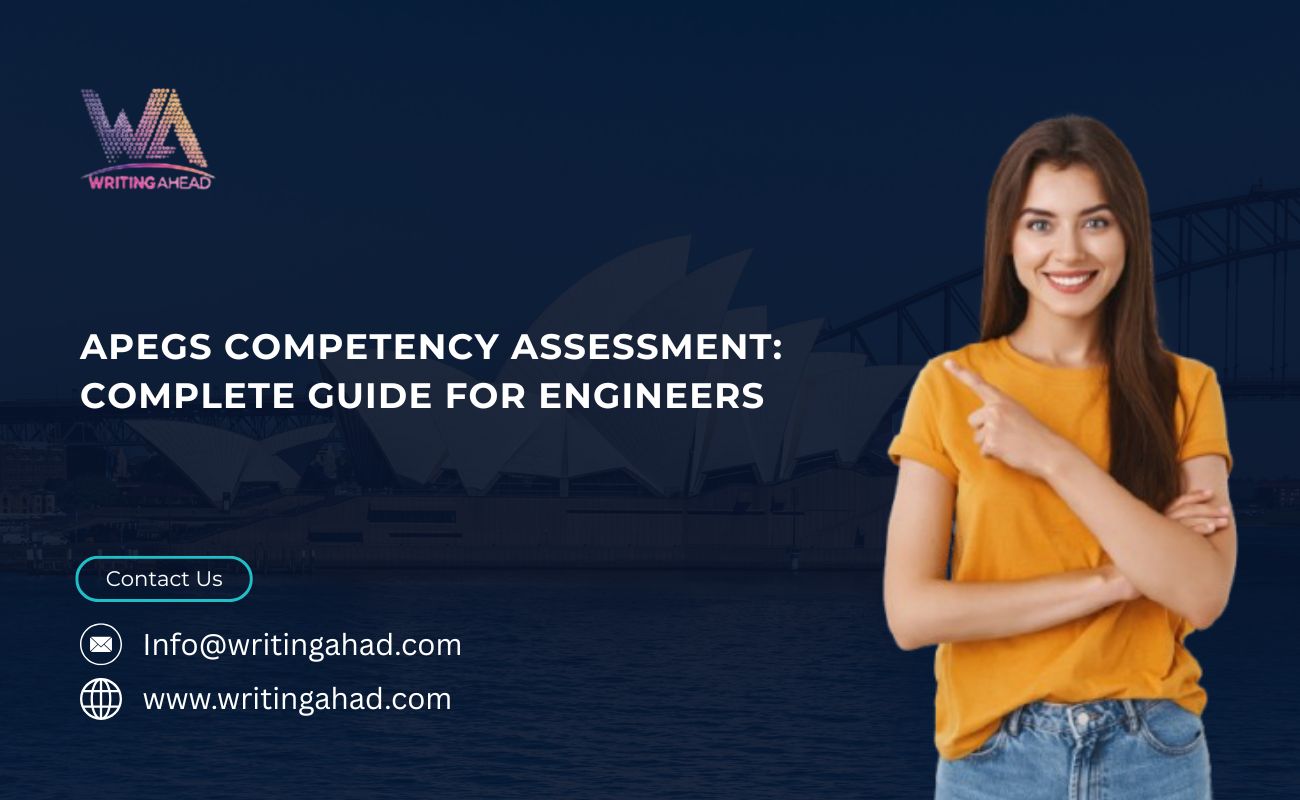The apegs competency assessment is a structured evaluation system designed to measure the readiness of engineers to practice as professionals. Engineers must demonstrate their technical expertise, ethical judgment, leadership, and professional skills through well-documented examples. The APEGS competency assessment plays a pivotal role in validating competency against defined standards. This complete guide explores each step of the process, clarifies expectations, and provides engineers with the knowledge required to prepare successfully.
Understanding the APEGS Competency Assessment
The apegs competency assessment evaluates professional experience rather than just academic achievement. Engineers are expected to present evidence of their applied knowledge in practical settings. Each competency is assessed to ensure that individuals have developed not only technical ability but also professional accountability and leadership.
Why the Assessment Matters
The assessment ensures that only engineers with proven competence enter professional practice. Unlike examinations, it focuses on real-life examples of work. Candidates who prepare a comprehensive APEGS Report illustrate how their decisions and actions align with industry standards. This process ensures credibility and trust in the engineering profession.
Core Components of the APEGS Competency Assessment
The apegs competency assessment covers multiple categories that demonstrate a well-rounded engineering background.
Technical Competence
Technical competence measures how effectively engineers apply theory to solve problems. The APEGS Report should include examples of engineering designs, analysis, or solutions that highlight decision-making and innovative approaches. Assessors evaluate the ability to balance practicality with theoretical knowledge.
Communication and Collaboration
Engineers must show they can communicate complex ideas clearly to varied audiences. Evidence may include presentations, technical reports, or leadership in team meetings. Strong communication ensures safe and efficient project outcomes.
Leadership and Professional Impact
Leadership extends beyond managing teams. Engineers must display initiative, mentor junior staff, and influence decisions positively. The APEGS Report should demonstrate how an engineer contributes to organizational growth, safety, and sustainability.
Ethics and Professional Responsibility
The assessment emphasizes ethical decision-making. Engineers are expected to provide examples where integrity, fairness, and responsibility guided their actions. Ethical competence ensures that public safety and societal well-being remain top priorities.
Structuring the APEGS Report
A well-prepared APEGS Report is the foundation of a successful submission. The structure must be precise, with each competency clearly addressed.
Selecting Strong Examples
Engineers should choose examples that best illustrate their expertise and growth. Scenarios involving problem-solving, leadership challenges, or ethical dilemmas provide strong evidence of competence.
Writing Clearly and Concisely
The APEGS Report should use professional language while maintaining clarity. Overly technical jargon should be avoided unless it directly supports the competency. Assessors must be able to understand the relevance of each example without excessive interpretation.
Linking Evidence to Competencies
Each section of the apegs competency assessment requires evidence linked directly to competency categories. The report must show measurable outcomes, such as cost savings, safety improvements, or innovative solutions.
Preparing for the Assessment Process
Preparation is as important as the submission itself. Engineers must approach the apegs competency assessment with strategy and organization.
Reviewing Competency Categories
Before drafting the APEGS Report, engineers should carefully review all competency categories. Understanding the expectations allows them to select examples that align with the criteria.
Gathering Supporting Documentation
Supporting documents such as project records, reports, and technical analyses can strengthen the submission. These documents provide context and reinforce the credibility of examples used in the APEGS Report.
Seeking Feedback
Colleagues, mentors, or supervisors can provide valuable feedback on draft submissions. A second opinion helps ensure that the report meets professional standards and avoids unnecessary gaps.
Common Challenges in the APEGS Competency Assessment
Although the process is straightforward, engineers often face challenges when preparing their APEGS Report.
Limited Experience in Some Areas
Not all engineers have equal exposure to every competency. In such cases, engineers should highlight transferable skills or provide examples from different projects that still demonstrate competence.
Striking the Balance Between Detail and Brevity
Excessive detail can overwhelm assessors, while too little information may weaken the case. The best approach is to remain concise while ensuring that all required information is included.
Understanding Reviewer Expectations
Reviewers look for clarity, relevance, and measurable outcomes. Engineers must align their APEGS Report with the expectations of the assessment framework.
Strategies for Success in the APEGS Competency Assessment
Engineers who prepare effectively increase their chances of success.
Develop a Timeline for Completion
Planning ensures that the APEGS Report is completed on time. Breaking the task into smaller sections prevents last-minute stress.
Focus on Continuous Professional Development
Engineers who continually engage in professional development find it easier to provide relevant examples. This approach also demonstrates a long-term commitment to growth.
Practice Reflective Writing
Reflective writing enhances the quality of the APEGS Report. Engineers should not only describe what they did but also explain why decisions were made and what outcomes resulted.
The Role of Reviewers in the APEGS Competency Assessment
The apegs competency assessment involves reviewers who carefully evaluate submissions.
How Reviewers Assess Reports
Reviewers analyze whether examples address competencies accurately. They also check for originality, professional maturity, and ethical reasoning. Reports that show depth and reflection stand out during evaluation.
Providing Feedback for Improvement
If a APEGS Report requires revisions, reviewers provide feedback. Engineers can use this feedback to strengthen their submission and clarify any missing details.
Benefits of Successfully Completing the Assessment
Completing the apegs competency assessment demonstrates professional readiness.
Recognition of Professional Competence
Engineers who succeed gain recognition for their expertise and credibility. The APEGS Report acts as official evidence of professional growth and responsibility.
Career Advancement Opportunities
Completion of the assessment enhances career prospects. Employers value engineers who have demonstrated their ability to meet rigorous standards of practice.
Contribution to the Engineering Community
Engineers who pass the assessment contribute positively to the profession. They set standards for others to follow and ensure that engineering practices remain ethical, innovative, and reliable.
Conclusion
The apegs competency assessment is more than an evaluation—it is a pathway for engineers to prove their readiness for professional practice. By preparing a comprehensive APEGS Report, engineers demonstrate not only technical expertise but also leadership, ethics, and communication. While challenges exist, a well-structured approach ensures success. The assessment validates the skills that engineers need to shape industries, safeguard communities, and advance the profession.
FAQs
What is the purpose of the apegs competency assessment?
The purpose is to evaluate an engineer’s practical skills, decision-making ability, and professional ethics through structured examples. The APEGS Report demonstrates evidence of competence in technical, leadership, communication, and ethical areas, ensuring engineers meet high professional standards before advancing their careers.
How should engineers select examples for the APEGS Report?
Engineers should select examples that highlight problem-solving, leadership, and ethical decision-making. The best examples are recent, detailed, and measurable. Evidence should directly connect to the competency criteria, making it easier for reviewers to assess readiness and validate the engineer’s professional development.
What common mistakes occur in the apegs competency assessment?
Common mistakes include using vague examples, lacking measurable outcomes, or providing excessive detail that confuses reviewers. Another frequent error is failing to connect evidence with competencies. A well-structured APEGS Report avoids these issues and presents information clearly, concisely, and with professional relevance.
How long does it take to prepare the APEGS Report?
The preparation timeline varies depending on experience and organization. Some engineers complete it in a few weeks, while others may take months to gather examples and write effectively. A planned approach, with early preparation and periodic review, significantly reduces stress and ensures thorough coverage.
What happens if the APEGS Report is not approved?
If the APEGS Report is not approved, reviewers provide feedback highlighting areas needing improvement. Engineers can revise and resubmit their report, addressing the specific issues raised. This iterative process helps ensure that the final submission meets the standards of the apegs competency assessment.


